Parker Solar Probe
Humanity’s First Visit to a Star
Launched: August 12, 2018 at 3:31am EDT
Launch Site: NASA’s Kennedy Space Center, Florida
Launch Vehicle: Delta IV-Heavy with Upper Stage
We’ve been studying the Sun for decades, and now we’re finally going to go where the action is!
Parker Solar Probe’s primary science goal is to trace how energy flows through the corona, the outermost layer of the sun’s atmosphere.
The First Mission to Touch the Nearest Star
Parker Solar Probe will be a historic mission, flying into the Sun’s atmosphere (or corona) for the first time.
The corona is the sun’s outer atmosphere and a constant source of curiosity for scientists who study our star. The corona is hundreds of times hotter than the sun’s surface. This is contrary to our normal experience – that it’s cooler further away from a source of heat – so it poses a mystery for solar scientists. The corona is also where magnetic, energetic solar material is accelerated out into space in a non-stop flow called the solar wind.
Launching in 2018, Parker Solar Probe will fly through the corona, closer to the sun’s surface than any other spacecraft to date. Scientists hope this data will help them understand how heat and energy move through the corona and drive the solar wind, which can cause space weather here on Earth. Parker Solar Probe will make two dozen close approaches to the sun over its seven-year mission.
NASA named this mission in honor of Eugene Parker, a solar astrophysicist who revolutionized our understanding of how the sun’s emissions affect our solar system.
Coming closer to the Sun than any previous spacecraft, Parker Solar Probe will employ a combination of in situ measurements and imaging to achieve the mission’s primary scientific goal: to understand how the Sun’s corona is heated and how the solar wind is accelerated. Parker Solar Probe will revolutionize our knowledge of the origin and evolution of the solar wind.
(CREDIT: NASA’s Scientific Visualization Studio and Johns Hopkins University Applied Physics Laboratory)
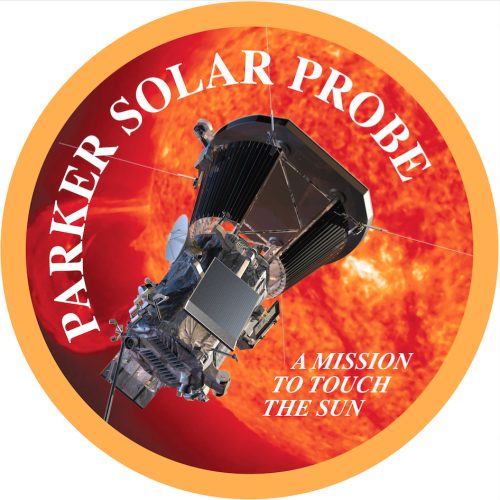

- On the final three orbits, Parker Solar Probe will fly to within 8.5 solar radii of the Sun’s “surface” 8.5 solar radii is 8.5 times the radius of the Sun, or about 3.7 million miles. That is about seven times closer than the current record-holder for a close solar pass, the Helios spacecraft.
- At closest approach, Parker Solar Probe will be hurtling around the Sun at approximately 450,000 miles per hour! That’s fast enough to get from Philadelphia to Washington, D.C., in one second.
- Parker Solar Probe will pass Venus less than two months after launch and will be collecting science data at its first solar pass just one month later.
- At closest approach to the Sun, while the front of Parker Solar Probe’s solar shield faces temperatures approaching 2,500° Fahrenheit (or about 1,400° Celsius), the spacecraft’s payload will be near room temperature.
- Parker Solar Probe will orbit the Sun 24 times, gradually “walking in” toward the Sun with each pass. The closest points of each orbit come well within orbit of Mercury the closest planet to the Sun.
The first five new discoveries of Parker Solar Probe
Parker Solar Probe touches the Sun
Parker Solar Probe sees solar streamers
Hear about Parker Solar Probe from the Project Scientist, Dr. Nour Raouafi
Parker Solar Probe makes news discoveries about the planet Venus
Learn more about Parker Solar Probe & what it is studying:
Learn more about Parker by playing the videos below!
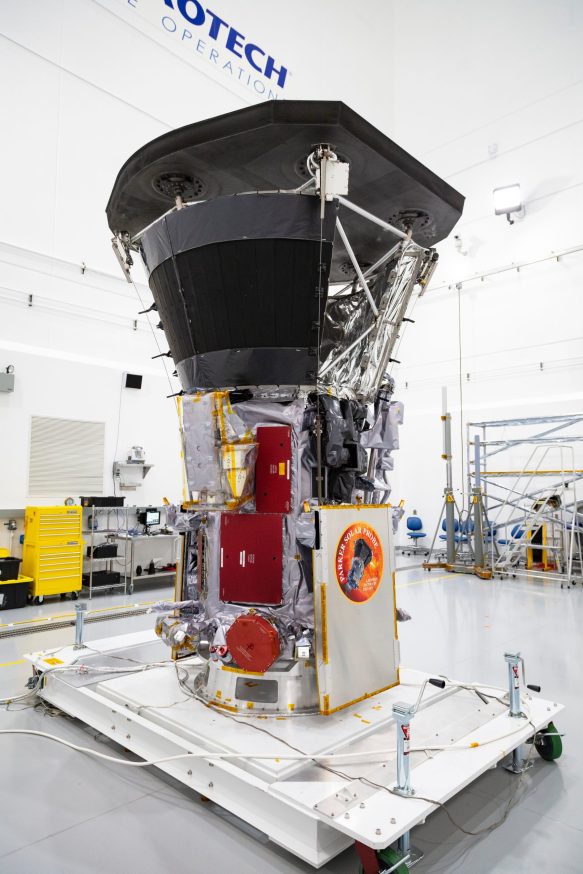
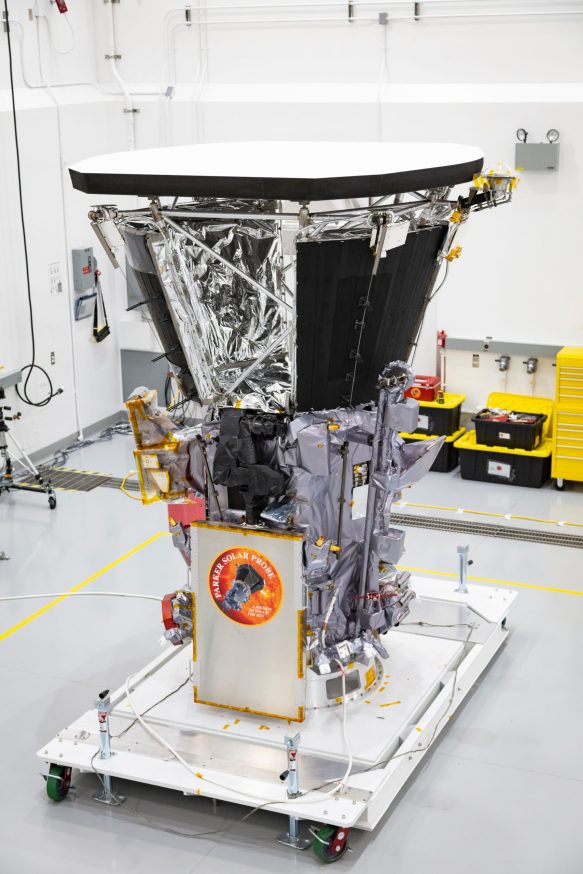
Parker Solar Probe sits in a clean room on July 6, 2018, at Astrotech Space Operations in Titusville, Florida, after the installation of its heat shield. Credit: NASA/Johns Hopkins APL/Ed Whitman
SPACECRAFT – Extreme Engineering
NASA’s historic Parker Solar Probe (PSP) mission will revolutionize our understanding of the Sun. PSP will swoop closer to the Sun’s surface than any spacecraft before it, facing brutal heat and radiation conditions.
The spacecraft will come as close as 3.83 million miles (and 6.16 million kilometers) to the Sun, well within the orbit of Mercury and more than seven times closer than any spacecraft has come before.
To perform these unprecedented investigations, the spacecraft and instruments will be protected from the Sun’s heat by a 4.5-inch-thick (11.43 cm) carbon-composite shield, which will need to withstand temperatures outside the spacecraft that reach nearly 2,500 degrees Fahrenheit (1,377 degrees Celsius).
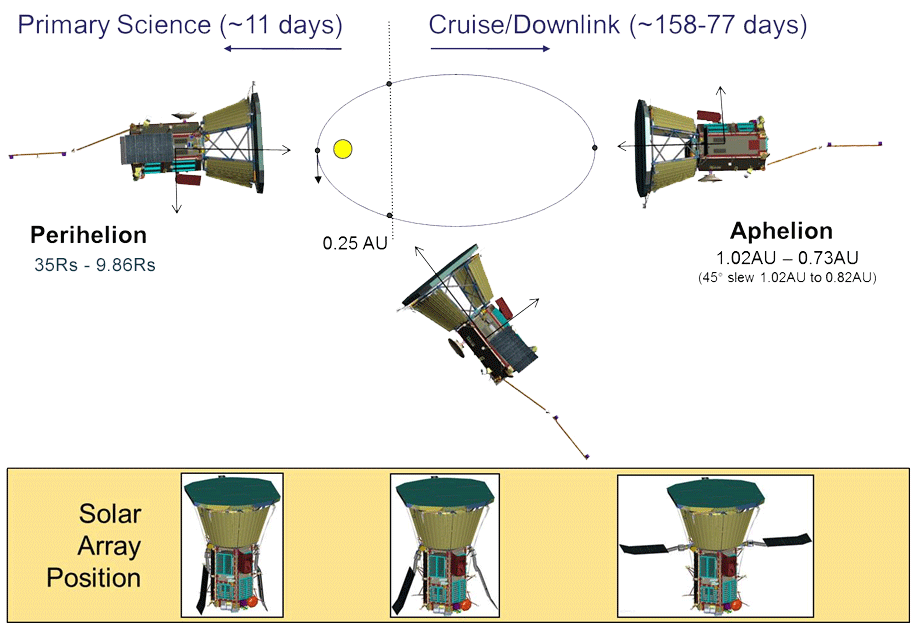
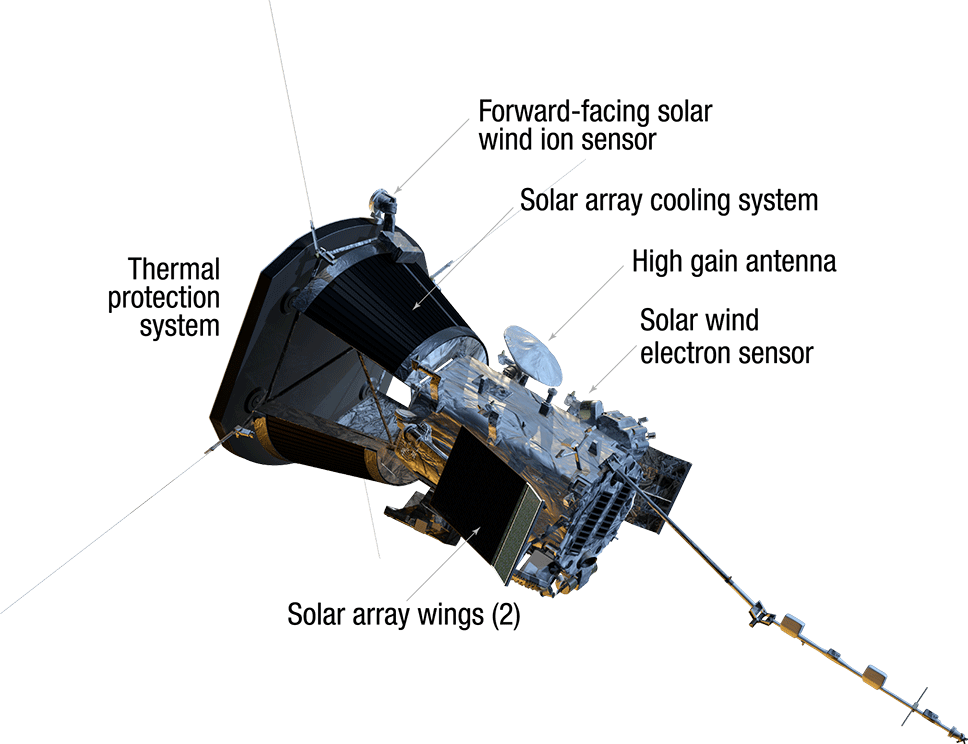
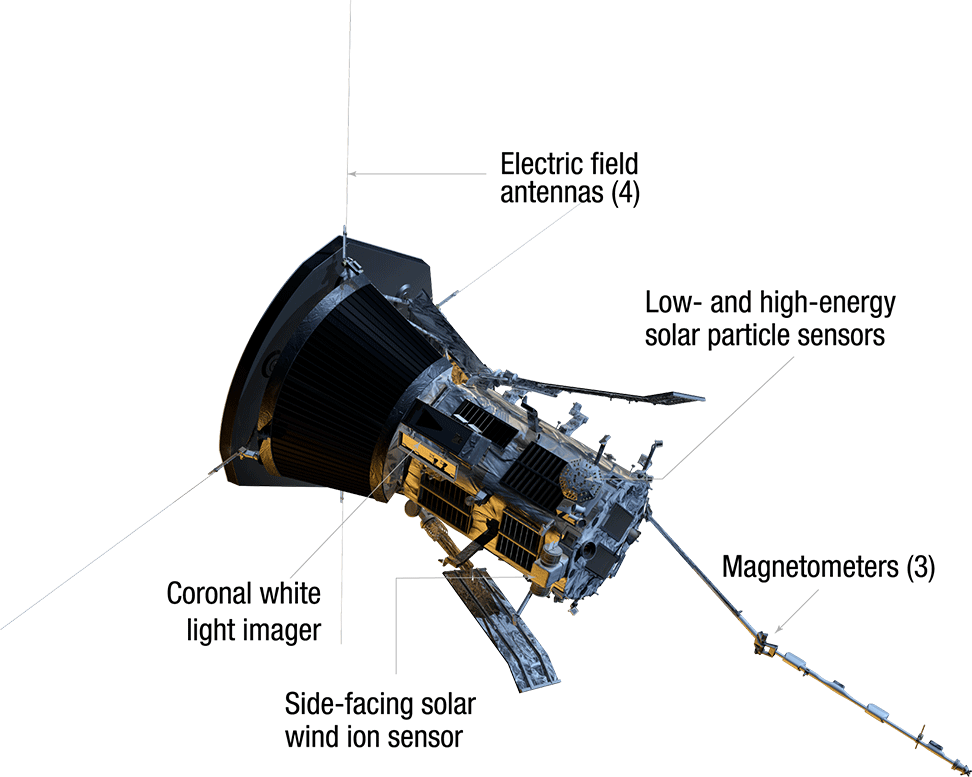
INSTRUMENTS
In order to unlock the mysteries of the corona, but also to protect a society that is increasingly dependent on technology from the threats of space weather, we will send Parker Solar Probe to touch the sun.
The primary science goals for the mission are to trace the flow of energy and understand the heating of the solar corona and to explore what accelerates the solar wind. Parker Solar Probe provides a statistical survey of the outer corona.
There are four major investigations:
Fields Experiment (FIELDS)
This investigation will make direct measurements of electric and magnetic fields and waves, Poynting flux, absolute plasma density and electron temperature, spacecraft floating potential and density fluctuations, and radio emissions.
FIELDS PI: Prof. Stuart Bale; University of California, Berkeley
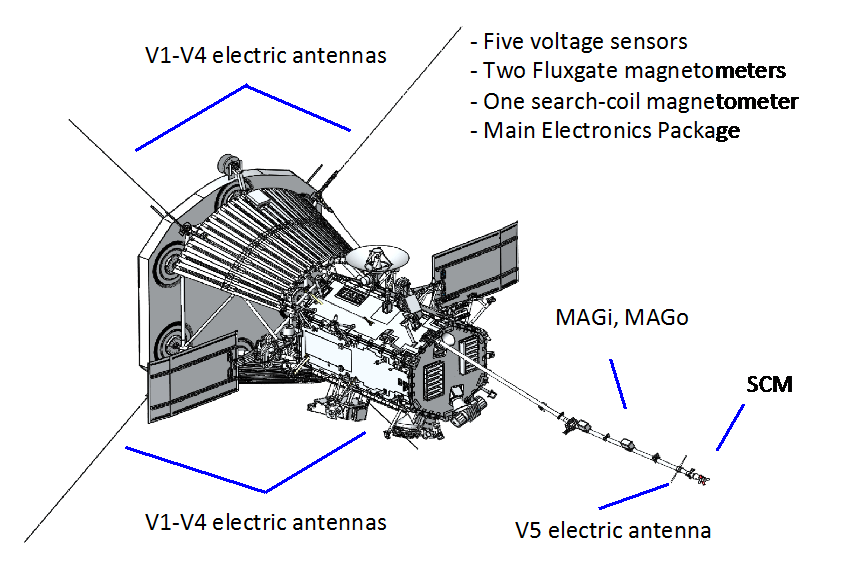
Integrated Science Investigation of the sun (IS☉IS)
This investigation makes observations of energetic electrons, protons and heavy ions that are accelerated to high energies (10s of keV to 100 MeV) in the sun’s atmosphere and inner heliosphere, and correlates them with solar wind and coronal structures.
IS☉IS PI: Dr. David McComas; Princeton University
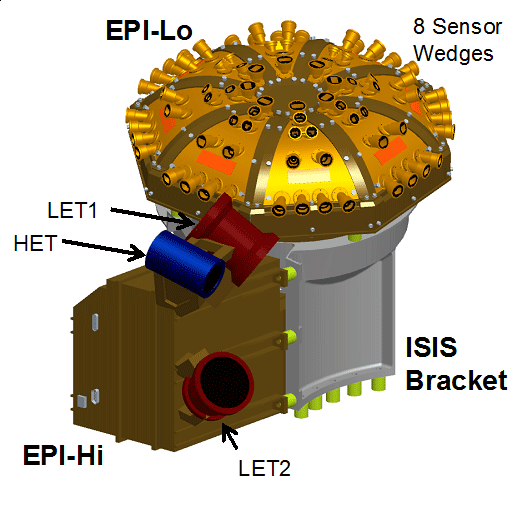
Wide-field Imager for Solar Probe (WISPR)
These telescopes will take images of the solar corona and inner heliosphere. The experiment will also provide images of the solar wind, shocks and other structures as they approach and pass the spacecraft. This investigation complements the other instruments on the spacecraft providing direct measurements by imaging the plasma the other instruments sample.
WISPR PI: Dr. Russell Howard; Naval Research Laboratory, VIDEO CREDIT: NASA/JPL/WISPR Team
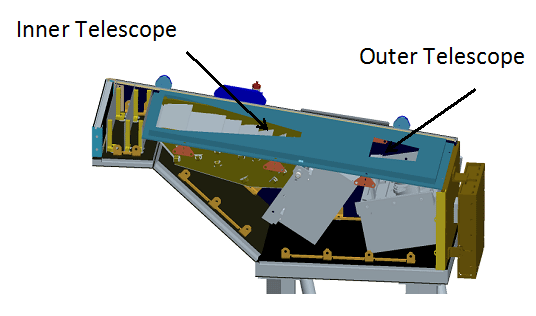
Solar Wind Electrons Alphas and Protons (SWEAP) Investigation
This investigation will count the most abundant particles in the solar wind — electrons, protons and helium ions — and measure their properties such as velocity, density, and temperature.
SWEAP PI: Prof. Justin Kasper; University of Michigan/ Smithsonian Astrophysics Observatory
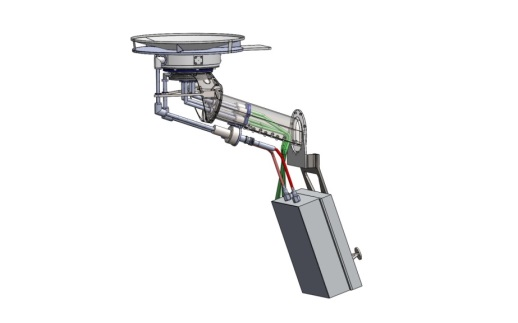
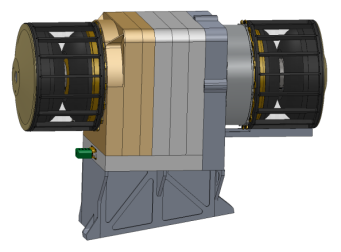
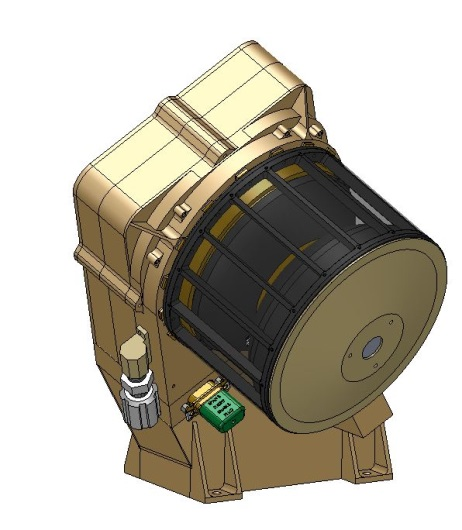
Parker Solar Probe will have 24 orbits around the Sun during its nominal mission.
The last 3, #22, #23, and #24 all being the closest approach to the Sun. The timeline below lists the perihelion of each orbit, which is the point in the orbit when Parker is closest to the Sun.
VIDEO CREDIT: NASA/JHUAPL
Parker Solar Probe Timeline
| Event | Type | Date and Time (UT) | Distance from Center of Sun | Angle Between PSP and Earth at Closest Approach |
| Venus Flyby 1 | Closest Approach | 2018-10-03 at 08:44 | 0.7 au | -14 degrees |
| Encounter 1 | Perihelion | 2018-11-06 at 03:27 | 0.17 au (35.6 RS) | 103 degrees |
| Encounter 2 | Perihelion | 2019-04-04 at 22:39 | 0.17 au (35.6 RS) | -48 degrees |
| Encounter 3 | Perihelion | 2019-09-01 at 17:50 | 0.17 au (35.6 RS) | 168 degrees |
| Venus Flyby 2 | Closest Approach | 2019-12-26 at 18:14 | 0.7 au | -99 degrees |
| Encounter 4 | Perihelion | 2020-01-29 at 09:37 | 0.13 au (27.8 RS) | 25 degrees |
| Encounter 5 | Perihelion | 2020-06-07 at 08:23 | 0.13 au (27.8 RS) | -103 degrees |
| Venus Flyby 3 | Closest Approach | 2020-07-11 | 0.7 au | 23 degrees |
| Encounter 6 | Perihelion | 2020-09-27 at 09:16 | 0.09 au (20.3 RS) | 143 degrees |
| Encounter 7 | Perihelion | 2021-01-17 at 17:40 | 0.09 au (20.3 RS) | 30 degrees |
| Venus Flyby 4 | Closest Approach | 2021-02-20 | 0.7 au | 160 degrees |
| Encounter 8 | Perihelion | 2021-04-29 at 08:48 | 0.074 au (15.9 RS) | -76 degrees |
| Encounter 9 | Perihelion | 2021-08-09 at 19:11 | 0.074 au (15.9 RS) | 174 degrees |
| Venus Flyby 5 | Closest Approach | 2021-10-16 | 0.7 au | -50 degrees |
| Encounter 10 | Perihelion | 2021-11-21 at 08:23 | 0.062 au (13.3 RS) | 87 degrees |
| Encounter 11 | Perihelion | 2022-02-25 at 15:38 | 0.062 au (13.3 RS) | -11 degrees |
| Encounter 12 | Perihelion | 2022-06-01 at 22:51 | 0.062 au (13.3 RS) | -106 degrees |
| Encounter 13 | Perihelion | 2022-09-06 at 06:04 | 0.062 au (13.3 RS) | 162 degrees |
| Encounter 14 | Perihelion | 2022-12-11 at 13:16 | 0.062 au (13.3 RS) | 66 degrees |
| Encounter 15 | Perihelion | 2023-03-17 at 20:30 | 0.062 au (13.3 RS) | -31 degrees |
| Encounter 16 | Perihelion | 2023-06-22 at 03:46 | 0.062 au (13.3 RS) | -125 degrees |
| Venus Flyby 6 | Closest Approach | 2023-08-21 | 0.7 au | 5 degrees |
| Encounter 17 | Perihelion | 2023-09-27 at 23:28 | 0.053 au (11.4 RS) | 144 degrees |
| Encounter 18 | Perihelion | 2023-12-29 at 00:54 | 0.053 au (11.4 RS) | 51 degrees |
| Encounter 19 | Perihelion | 2024-03-30 at 02:20 | 0.053 au (11.4 RS) | -42 degrees |
| Encounter 20 | Perihelion | 2024-06-30 at 03:46 | 0.053 au (11.4 RS) | -131 degrees |
| Encounter 21 | Perihelion | 2024-09-30 at 05:13 | 0.053 au (11.4 RS) | 141 degrees |
| Venus Flyby 7 | Closest Approach | 2024-11-06 | 0.7 au | -81 degrees |
| Encounter 22 | Perihelion | 2024-12-24 at 11:41 | 0.046 au (9.9 RS) | 52 degrees |
| Encounter 23 | Perihelion | 2025-03-22 at 22:25 | 0.046 au (9.9 RS) | -37 degrees |
| Encounter 24 | Perihelion | 2025-06-19 at 09:09 | 0.046 au (9.9 RS) | -123 degrees |
CREDIT: JHU at APL & NASA
Parker Solar Probe Timeline
2015
- March: Critical Design Review (CDR)
2016
- May: System Integration Review
- July: KDP-D
- July: Start of Integration and Testing
2017
- Begin March 2017: Instrument Deliveries
- Begin August 2017: Observatory System Testing
- Fall 2017: Shipment of Observatory to GSFC
2018
-
- Spring 2018: Shipment of Observatory to Cape Canaveral
- August 12, 2018: Launch
2018-2025
- See table above
This summer, NASA is launching Parker Solar Probe, a mission to touch the Sun.
This spacecraft will fly closer to the Sun’s surface than any spacecraft before it, facing brutal heat and radiation. It will be the first spacecraft to fly directly through the Sun’s corona – the part of the solar atmosphere visible during an eclipse – to answer questions about solar physics that have puzzled scientists for more than six decades.
Gathering information about fundamental processes near the Sun can help improve our understanding of how the Sun changes our space environment – such space weather can affect astronauts, interfere with the orbits of satellites, or damage onboard electronics.
Parker Solar Probe’s launch is targeted for August 6–19, 2018. nasa.gov/solarprobe
Join us live to get a deep dive on the science and engineering of this stellar mission. We’ll also be answering your #askNASA questions!
Participating live are:
- Alex Young, solar scientist at NASA Goddard
- Nicola Fox, Parker Solar Probe project scientist at JHU Applied Physics Laboratory (APL)
- Betsy Congdon, Parker Solar Probe Thermal Protection System lead engineer at APL
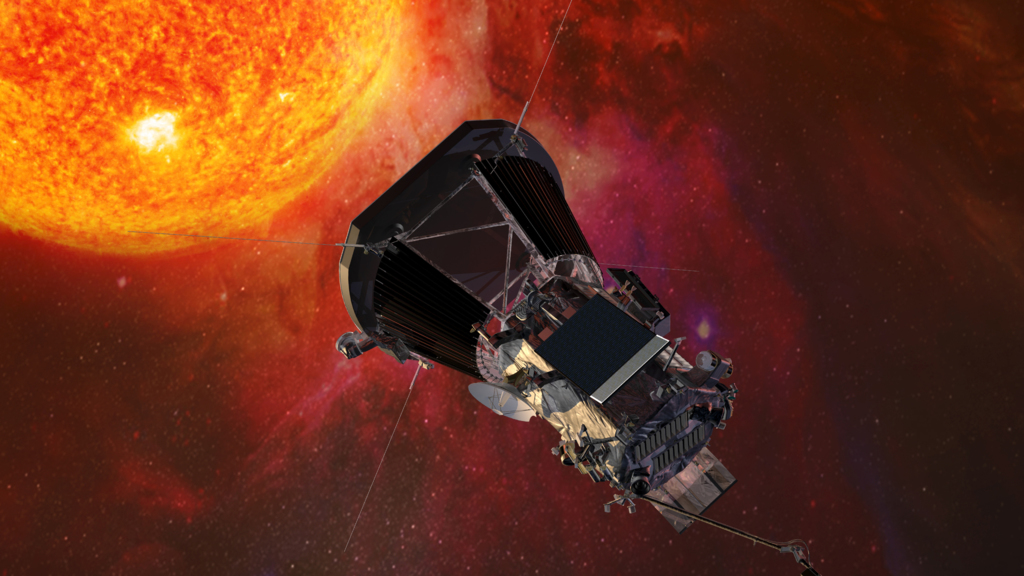
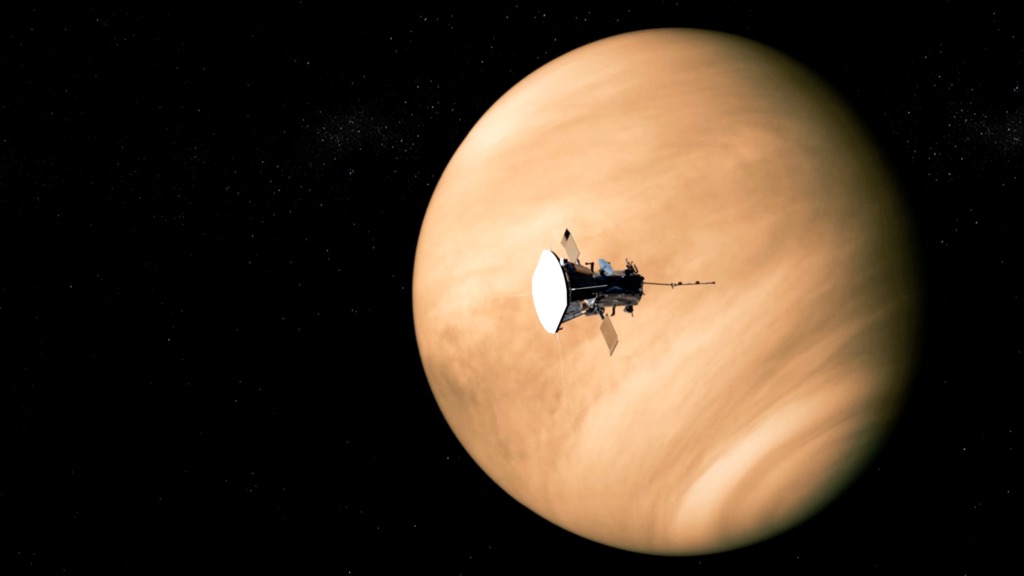
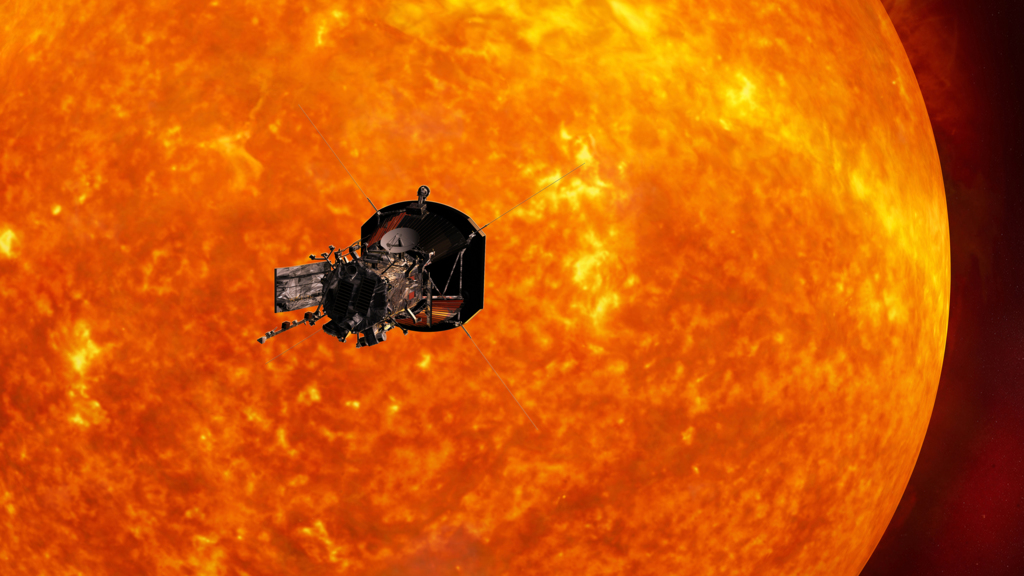
CREDIT: NASA’s Scientific Visualization Studio and Johns Hopkins University Applied Physics Laboratory.
In the News
- NASA Mission to ‘Touch the Sun’ Due to Launch in Early August
- NASA prepares to launch Parker Solar Probe, a mission to touch the Sun
- NASA solar mission to launch in August
- Solar probe set to launch into the sun’s scorching ‘red zone’
- NASA prepares to fly probe into Sun’s scorching atmosphere
- NASA prepares to fly its 430,000mph Parker Solar Probe for groundbreaking mission to touch the sun (UK)
- NASA’s nieuwste ruimtesonde gaat de zon aantikken (Dutch)
- Nasa se prepara para lançar sonda até o ponto mais próximo do Sol (Spanish)
- La NASA prepara una misión para ‘tocar el sol’ (Spanish)
- NASA va lansa sonda Parker Solar Probe, într-o misiune fără precedent de explorare a Soarelui (Romanian)
- Une sonde ira explorer l’une des régions les plus dangereuses du Soleil (French)
- NASA Akan Kirim Pesawat Luar Angkasa Sedekat Mungkin ke Matahari (Indonesian)
- Nasa ska flyga närmare solen än Ikaros (Swedish)
- NASA准备发射新太阳探测器 将抵达迄今距太阳最近处 (Chinese)
- Mỹ, Nga khoe năng lực trong không gian (Vietnamese)
- NASA prepares to fly probe into sun’s scorching atmosphere (English – Japan)
- ‘Touch the Sun’: NASA to Launch Mission to Sun’s Corona in August (English – Russia)
- 태양 수수께끼, 해답 찾을까 (Korean)

First Discoveries of Parker Solar Probe
On December 4, 2019, a series of 4 papers highlighting some of the first results from NASA’s Parker Solar Probe were released. NASA released a short trailer from the key scientists.
Then it released a video discussing the 5 key results from the papers:
These results are from the first 3 of 24 orbits so there will be a lot more to come. The papers are published online in Nature:
- Sun-bombing spacecraft uncovers secrets of the solar wind
- Parker probe kicks off a golden age for solar exploration
On December 11th, another press conference was given at the 2019 Fall meeting of the American Geophysical Union in San Francisco. The results from the Nature papers were presented again along with a non-solar result, Parker Solar Probe’s discovery of a dust trail belonging to the asteroid Phaethon, which gives us the Geminids meteor shower every year on Earth.
First Whispers of the SOLAR WIND’S BIRTH
Scientists have studied the solar wind for more than 60 years, but they’re still puzzled over some of its behaviors. NASA’s Parker Solar Probe — designed and built by APL — hears the small chirps, squeaks and rustles that hint at the origin of this mysterious and ever-present wind. And now the Parker Solar Probe team is getting their first chance to hear them, too.
Parker Solar Probe’s FIELDS instrument can eavesdrop on the electric and magnetic fluctuations caused by plasma waves, and it can “hear” when the waves and particles interact with one another, recording frequency and amplitude information about these plasma waves that scientists can transform into sound files.
Credit: NASA/Johns Hopkins APL

